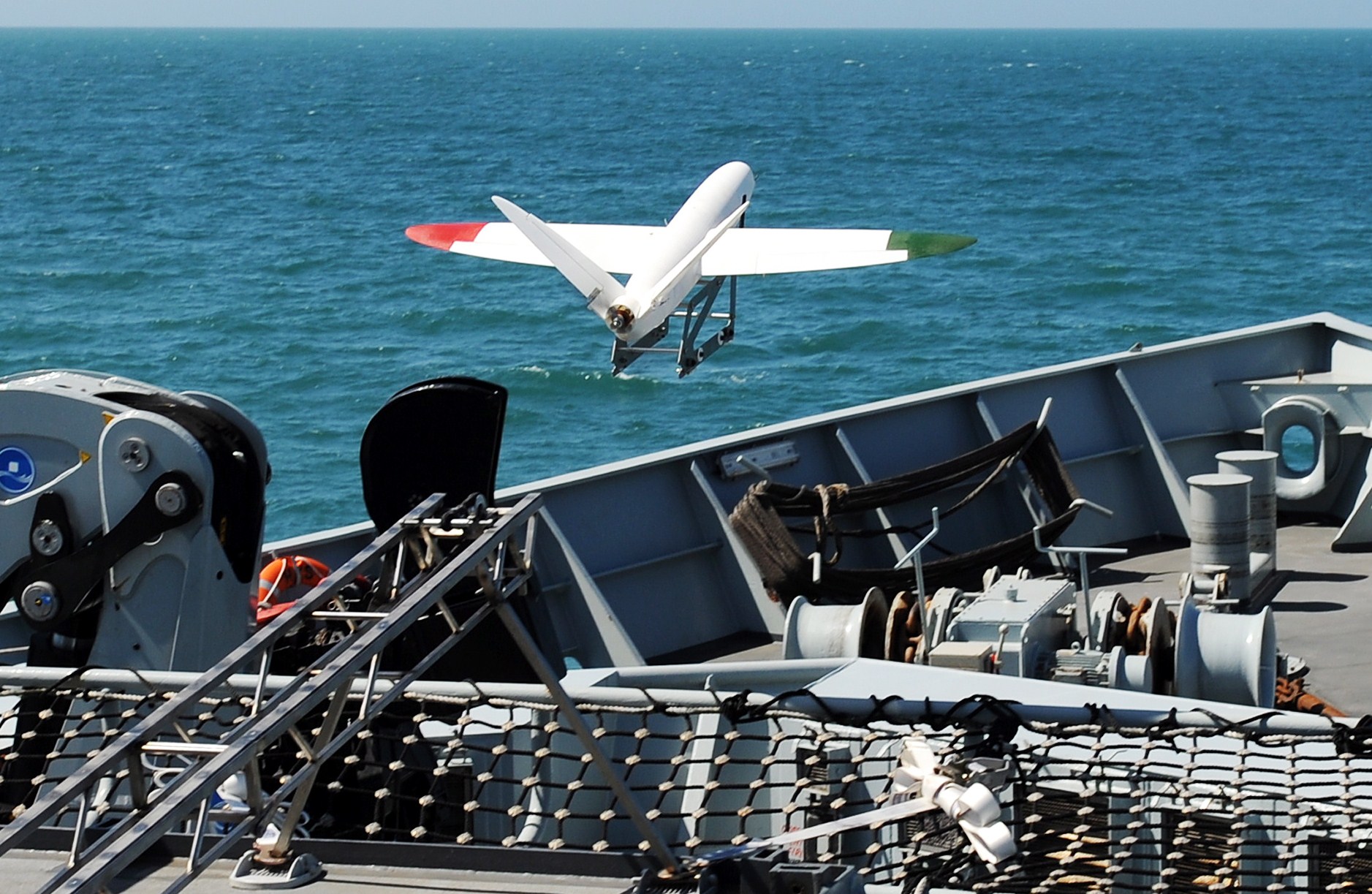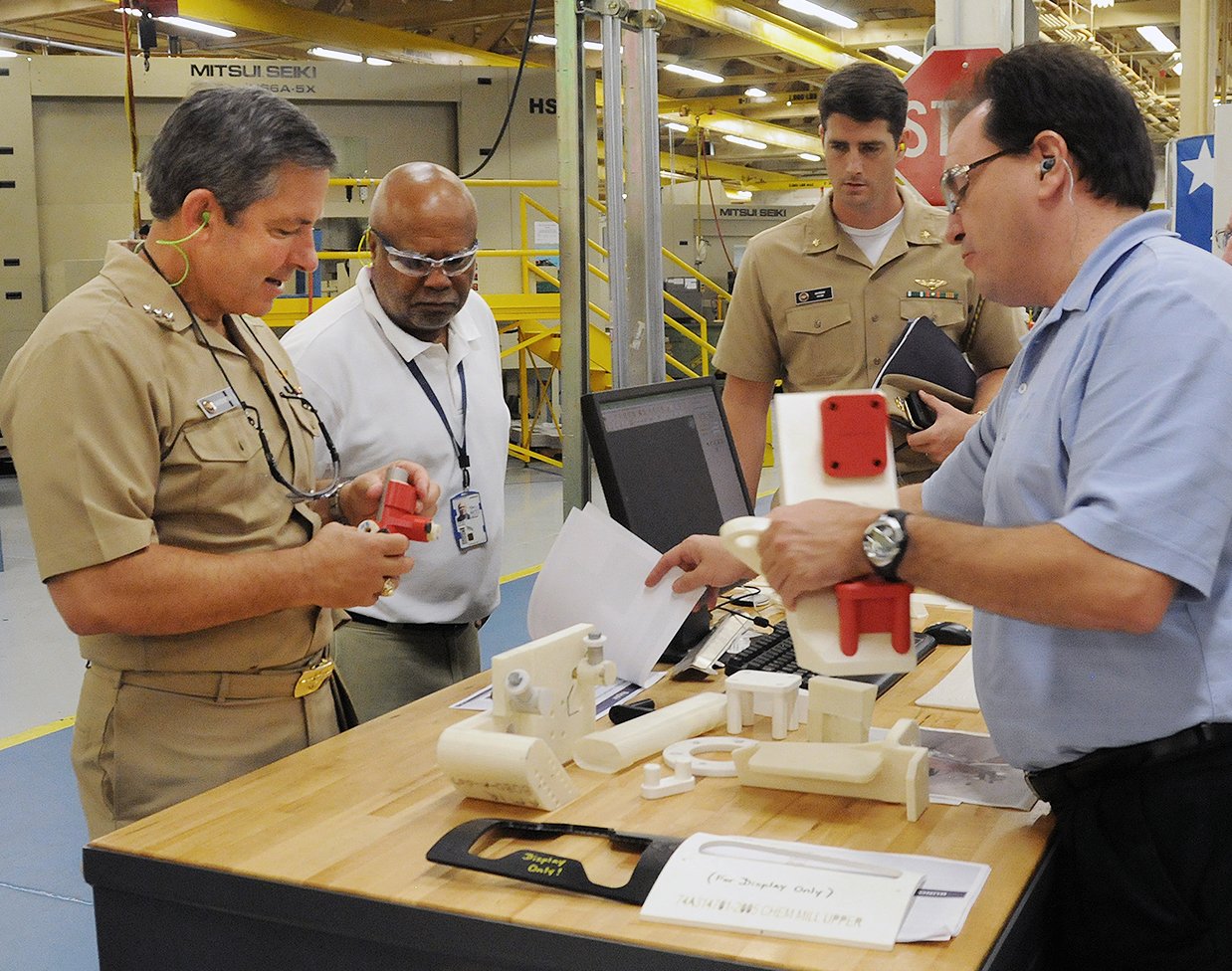
LONDON — While U.S. Navy sailors have trialed the use of additive manufacturing (3D printing) technology to build a miniature quadcopter aboard USS Essex (LHD-2) and fly it around the hanger deck, it’s their British counterparts who were first to launch a 3D-printed fixed-wing unmanned aerial vehicle from a ship.
The offshore patrol vessel HMS Mersey used a specially-fitted catapult to fire the SULSA (Southampton University Laser-Sintered Aircraft) off the bow on July 21. Weighing 3kg and with a 1.5m wingspan, the drone flew for 500m before landing on a beach on England’s south coast.
For deployed naval forces, the key benefits of 3D printing are a shorter supply chain with reduced spares inventories (releasing space onboard ships for more valuable stores or equipment) and improved availability, according to Paul Jones, director of U.K.-based consulting firm Arke Ltd.
It could also significantly reduce the need for highly-trained fitters, he told USNI News, and allow the rapid production of custom-designed items for specific tasks that were not envisaged when the ship left port.
“3D printing is ideal for limited production runs, for instance if you want five [unmanned underwater vehicles] for a particular mission. It could take just two days to manufacture a plastic hull and insert the electronics”, said Jones, a production engineer whose company has provided cost estimating services for several Royal Navy and other U.K. Ministry of Defence projects.
“We looked at shipboard applications as exemplars, and the one we picked for the Royal Navy was the knob on a gas cooker. They break off. We took a photograph of the old one, with a bit of ingenuity you can produce the final finish and the clip to push it back on, and you’ve got a knob again. It’s all about maintaining availability.”
A stereoscopic inspection device or X-ray camera can also be used to take a snapshot of the damaged object, with the image then manipulated by computer aided design software for 3D printing.
Speaking at the DSEI defence exhibition in London last week, Jones said it was a genuinely disruptive technology that could be used by sailors with general production training. “All you have to do is make sure the right program is on the machine, the right tooling is attached, and the right material is in the hopper”, he said.
However additive manufacturing does have limitations; it will not, for example, provide the correct surface finish for a Class A screw thread in a crankshaft main bearing.
“While 3D printing gives you net tolerance – the correct dimensions – it won’t necessarily give you the right finish, so you need a CNC [computer numerical control] machine for reductive manufacture on top of the additive manufacture”, Jones explained.
A top-end five axis CNC machine incorporating a laser head for 3D printing can be purchased for about $2 million, but the savings incurred by not having to buy expensive spares from the original equipment manufacturer means the initial investment should be recouped fairly swiftly.
“A titanium gas turbine casing costs between [$76,000] and [$150,000] so you won’t need to manufacture very many of them before you break even on the cost of the machine.”
Issues surrounding IP ownership are another possible stumbling block, and the OEM will almost certainly refuse to warranty the performance of 3D-printed replacement parts.
There are also safety concerns relating to hazardous materials. One 3D process requires the presence of argon gas, which is heavier than air so in the event of a leak may collect in the bowels of a ship with potentially suffocating results.
The metal powders which are used to construct finished items, layer by layer, are explosive and will also require very careful storage and handling.
“Aluminium powder is massively dangerous”, said Jones, “so you wouldn’t want to keep it near where fire is possible, or where you could have an intrusion. Keep it in the weapons magazine”.
Ultimately, his preferred solution for 3D printing in the defence arena will see spare parts manufactured not onboard a ship or at a forward military base, but at a central facility ashore.

“My vision is more of a go-co [government-owned, contractor-operated business] at somewhere like Bicester [an MoD ordnance depot 60 miles northwest of London]. The MoD builds a factory and buys the machines, industry brings its own drawings and does the manufacturing, and the parts are flown out to wherever they’re needed. The supply chain would be faster, and it would be UK-based so more stable. It would also be ideal for NATO exercises.
“The MoD are right behind it. They can see the military advantage and the availability advantage. The logistics people can see the obsolescence defeat advantage: wait till the problem pops up and fix it, there and then. You haven’t even got to find the original manufacturer, you just need the part.
“It will change the tempo of the battlefield. And it will be sweet release for people who no longer have to carry every imaginable spare.”





